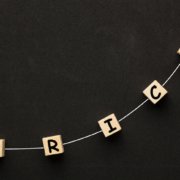Senior Living Marketing: The Power of Differentiation
Marketing a senior living community can be challenging. After all, most communities are essentially selling the same thing. As a result, it can be difficult for consumers to identify the community best suited for their lifestyle and needs.
How can you elevate your senior living marketing to show true differentiation? Read on.
1. Differentiate through technology. Here’s what to keep in mind when evaluating your options.
- Management efficiency. Certain software can help reduce expenses in all areas of operations, such as food, labor, and utilities. The best part? The savings will more than cover the expenses of implementation. Check out some great options here.
- Safety. As resident acuity rises, technology can provide exceptional support in resident safety. Think emergency response systems, motion detection, medication management, and e-health records. Look for a company who offers innovation and custom solutions.
- Communication. You must have the right technology to keep families and residents informed. Here’s an example of an innovative care coordination and communication system.
- Lifestyle and wellness. More and more residents are using technology. iPads are a great way to connect residents and families and help them stay engaged.
2. Differentiate through value and price. You could use a “high-end” approach. This caters to the belief that the more costly a product or service is, the more valuable it is. Another option: Position your brand as the provider of high quality at a value price. (Hint: Southwest Airlines does a great job at the latter.)
3. Differentiate through product and services. Convey value by highlighting unique product or service features. For example, how does your dining program compare to local restaurants? How does your resident wellness program compare?
4. Differentiate through customer service. Thanks to the prevalence of online reviews, good customer service will always be important. But exceptional service will elevate your status in the senior living marketplace even more. What are your residents and families saying about you? Do you have a customer service program that creates raving fans?
5. Differentiate through user experience. Senior living communities must build emotional connections through memorable experiences. Remember, there are many transition “points” for residents and families during their stay in your senior living community. How well do you do at these important points in time? Are you eliciting feedback from your residents and following through on what you’ve heard?
Need help creating an unbeatable senior living marketing strategy?
We’ve spent decades working in the industry. Let us help!








